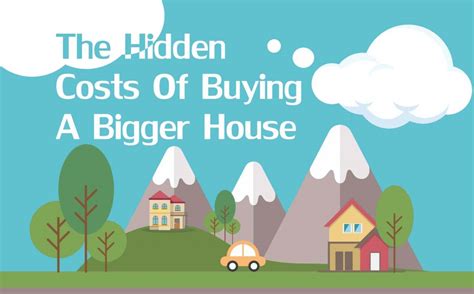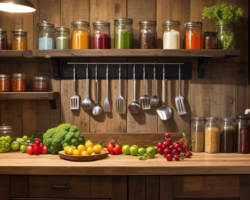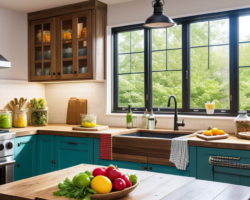Initial Purchase Price vs Total Cost
In the world of real estate, one of the most important considerations for potential homeowners is the initial purchase price of a property. However, it is crucial to understand that the initial purchase price is just one factor in determining the total cost of homeownership. There are numerous additional expenses that need to be taken into account during the buying process and throughout the life of owning a home.
Initial Purchase Price: The initial purchase price refers to the total amount of money that a buyer pays to acquire a property. This price includes the cost of the house itself, as well as any associated fees such as real estate agent commissions or closing costs. While it may seem like the most significant expense, it is important to recognize that there are many factors beyond the purchase price that contribute to the total cost of homeownership.
Additional Expenses During the Buying Process: When purchasing a home, there are various additional expenses that arise during the buying process. These expenses can include costs such as home inspections, appraisals, and legal fees. Home inspections are crucial to uncover any potential issues with the property that could require repairs or renovations, while appraisals help determine the fair market value of the home. Legal fees are necessary for hiring a lawyer to handle the paperwork and ensure a smooth transaction. It is important for buyers to budget for these additional expenses to avoid any financial surprises.
Additional Expenses During the Buying Process
When it comes to buying a new home, it’s important to consider not only the initial purchase price but also the additional expenses that may arise during the buying process. These expenses can add up quickly and catch homebuyers off guard if they are not adequately prepared. In this blog post, we will explore some of the common additional expenses that buyers may encounter and discuss how to budget for them effectively.
Home Inspection and Appraisal Fees
One of the first additional expenses that most homebuyers will encounter is the cost of a home inspection and appraisal. These fees are typically paid by the buyer and are necessary to ensure that the home is in good condition and accurately valued. A home inspection can uncover any hidden issues with the property, such as structural problems or faulty systems, while an appraisal determines the fair market value of the home. It’s important to budget for these expenses as they are crucial in making an informed decision about the property.
Property Taxes and Insurance Costs
Another significant expense to consider during the buying process is property taxes and insurance costs. Property taxes vary depending on the location and value of the property and can significantly impact the overall cost of homeownership. Additionally, lenders typically require buyers to obtain homeowners insurance to protect their investment. It’s essential to research and calculate these expenses beforehand to ensure they are affordable and fit within your budget.
Maintenance and Repair Costs
While the initial purchase price may seem like the most significant financial commitment, it’s important not to overlook the ongoing maintenance and repair costs associated with homeownership. Owning a home comes with responsibilities, such as regular maintenance, repairs, and replacements of appliances or systems. These costs can quickly add up and impact your monthly budget. It’s crucial to set aside funds for these expenses to prevent any financial strain down the line.
Conclusion
Buying a home involves more than just the initial purchase price. It requires careful consideration of the additional expenses that may arise during the buying process. By budgeting for home inspection and appraisal fees, property taxes and insurance costs, as well as ongoing maintenance and repair expenses, homebuyers can ensure that they are financially prepared for the responsibilities of homeownership. Awareness and planning are key to a smooth buying process and long-term financial stability.
Home Inspection and Appraisal Fees
When buying a new home, it’s important to consider all the costs involved. One of the most crucial steps in the buying process is the home inspection and appraisal. These fees may seem like an extra expense, but they are essential for ensuring that you’re making a sound investment. Let’s take a closer look at the significance of home inspection and appraisal fees and how they impact the overall cost of homeownership.
Firstly, home inspections are conducted to assess the condition of the property. A qualified inspector will thoroughly examine the home’s structural integrity, electrical systems, plumbing, and other important features. This inspection helps identify potential issues that could lead to costly repairs in the future. While home inspection fees vary depending on the size and location of the property, they typically range from $300 to $500.
Secondly, appraisal fees are essential to determine the fair market value of the home. An appraiser evaluates the property’s worth based on its condition, location, size, and recent sales of comparable properties in the area. Lenders require an appraisal to ensure that the loan amount does not exceed the actual value of the property. Appraisal fees typically cost between $300 and $500 as well.
Considering the importance of home inspection and appraisal in the buying process, these fees play a key role in protecting your investment. They provide you with an accurate understanding of the property’s condition and value, allowing you to make an informed decision. While these fees may seem like an additional cost, they can potentially save you from purchasing a home with hidden problems or overpaying for a property.
- Home inspections help identify potential issues that may require costly repairs in the future.
- Appraisal fees determine the property’s fair market value and ensure that the loan amount is appropriate.
- Both inspections and appraisals play a crucial role in protecting your investment and making an informed decision.
| Cost | Home Inspection | Appraisal |
|---|---|---|
| Low Range | $300 | $300 |
| High Range | $500 | $500 |
Property Taxes and Insurance Costs
When you make the decision to buy a home, there are several costs that you need to take into consideration. One important aspect of homeownership is understanding the property taxes and insurance costs that come along with owning a property. These costs are a necessary part of homeownership and it’s crucial to factor them into your budget.
Property taxes are annual taxes that are assessed on the value of your property by the local government. The amount you pay in property taxes will depend on the assessed value of your home and the tax rate in your area. Property taxes are typically used to fund local services such as schools, roads, and public safety. It’s important to note that property tax rates can vary significantly depending on where you live, so it’s worth researching the rates in your desired location.
Insurance costs are another expense that homeowners need to consider. Homeowners insurance provides financial protection in case of damage to your property due to unforeseen events such as fire, theft, or natural disasters. The cost of homeowners insurance can vary depending on factors such as the value of your home, the location, and the coverage options you choose. It’s important to shop around and compare quotes from different insurance providers to ensure you are getting the best coverage at the most affordable price.
- Property taxes can be a significant expense, so it’s important to account for them when budgeting for homeownership.
- Make sure to research the property tax rates in your desired location to get an accurate idea of what you can expect to pay.
- Homeowners insurance is an essential part of protecting your investment, so it’s important to factor this into your budget as well.
- Shop around and compare quotes from different insurance providers to ensure you are getting the best coverage at the most affordable price.
| Cost Category | Property Taxes | Insurance Costs |
|---|---|---|
| Annual Amount | $3,000 | $1,200 |
| Monthly Amount | $250 | $100 |
As you can see, property taxes and insurance costs can add up to a significant amount over the course of a year. It’s important to include these expenses in your budget to ensure you can comfortably afford your new home. By considering these costs upfront, you can make informed decisions and plan your finances accordingly.
Maintenance and Repair Costs
Maintaining and repairing a home is an inevitable part of homeownership. No matter how meticulously you take care of your property, there will always be wear and tear that needs attention. It’s crucial to understand the importance of budgeting for maintenance and repair costs to ensure the long-term well-being of your home and avoid any unexpected financial burdens.
When considering maintenance and repair costs, it’s essential to differentiate between routine maintenance and unexpected repairs. Routine maintenance tasks include regular inspections, cleaning, and servicing of various components of your home. This proactive approach ensures that minor issues are detected early and can be fixed before they turn into major problems.
On the other hand, unexpected repairs can arise due to unavoidable occurrences such as natural disasters, accidents, or sudden equipment breakdowns. These unforeseen expenses often catch homeowners off guard, emphasizing the importance of setting aside a budget for such emergencies.
Creating a home maintenance and repair budget can help you manage these costs effectively. This can be done by estimating the average annual expenses based on the age and condition of your home, as well as the potential repair or replacement costs of its various components.
Listed below are some common maintenance and repair costs to consider:
| Maintenance and Repair Expenses | Estimated Cost |
|---|---|
| Regular HVAC servicing | $100 – $200 per year |
| Roof repairs | $500 – $5,000 (depending on the extent of damage) |
| Painting and caulking | $1,000 – $5,000 (depending on the size of the house) |
| Plumbing repairs | $200 – $500 (for minor repairs) |
| Electrical repairs | $150 – $500 (for minor repairs) |
Remember that these estimates are general figures and can vary depending on various factors, such as the size of your home, its location, and the prevailing rates in your area.
Planning ahead for maintenance and repair costs is crucial to ensuring your home remains in good condition and retains its value over time. By setting aside a portion of your budget for these expenses, you can avoid the stress and financial strain that may arise when unexpected repairs are needed.
Ultimately, being proactive about maintaining your home and addressing repair needs promptly can save you from more significant problems and expenses down the line. So, take the necessary steps to keep your home in top shape and prioritize its upkeep to enjoy a comfortable and worry-free living experience.
HOA Fees and Other Monthly Expenses
When considering homeownership, it’s crucial to take into account all the expenses that come with it. One of these additional costs are Homeowners Association (HOA) fees, which can vary widely depending on the location and amenities offered by the community. These fees are typically paid on a monthly basis and contribute to the overall upkeep and maintenance of the community. HOA fees can cover a variety of services such as landscaping, security, and access to shared facilities like pools or gyms.
Additionally, there are other monthly expenses that homeowners need to plan for. These can include utility bills such as electricity, gas, and water. It’s important to research the average costs of these utilities in the area you are considering purchasing a home, as they can vary greatly depending on the region.
Furthermore, homeowners should also budget for ongoing maintenance and repairs. Owning a home means being responsible for its upkeep, which can include expenses such as regular maintenance tasks like lawn care, HVAC servicing, and general repairs. These costs can add up over time, and it’s important to have a contingency fund in place for unexpected repairs or replacements.
- HOA fees cover community maintenance and shared amenities.
- Utility bills such as electricity, gas, and water need to be budgeted for.
- Ongoing maintenance and repairs are necessary expenses for homeowners.
| Expense | Average Cost (per month) |
|---|---|
| HOA Fees | $200 |
| Electricity | $100 |
| Gas | $50 |
| Water | $75 |
| Maintenance and Repairs | $200 |
It’s important to note that the cost of HOA fees and other monthly expenses can vary significantly depending on factors such as the size of the property, the amenities provided by the community, and the location. It’s crucial for potential homeowners to thoroughly research and consider these additional costs before making a purchase.
By taking these monthly expenses into account, homeowners can better plan for the total cost of homeownership and avoid any financial surprises down the line. It’s always advisable to consult with a financial advisor or real estate professional to understand the specific expenses associated with homeownership in the desired area.
Hidden Costs of Homeownership Loans
When it comes to homeownership, many people focus on the initial purchase price of the property. However, there are several hidden costs associated with homeownership loans that must be taken into consideration. These costs can significantly impact the overall affordability and financial commitment of owning a home. It’s essential to understand these hidden costs upfront to avoid any surprises down the road.
One of the most significant hidden costs of homeownership loans is the interest rate. The interest rate determines the cost of borrowing money and can add up over the life of the loan. It’s crucial to compare different lenders and loan options to secure the most favorable interest rate possible. Even a small difference in interest rates can have a significant impact on the total cost of homeownership.
Private Mortgage Insurance (PMI) is another hidden cost that borrowers may encounter when obtaining a homeownership loan. PMI is typically required if the down payment on a home is less than 20% of the purchase price. This insurance protects the lender in case the borrower defaults on the loan. It’s important to factor in the cost of PMI when budgeting for monthly mortgage payments as it can add a significant amount to the overall expenses.
In addition to the interest rate and PMI, borrowers also need to consider the closing costs associated with homeownership loans. Closing costs include various expenses such as loan origination fees, appraisal fees, title search and insurance, and attorney fees. These costs are typically paid at the closing of the loan and can range from 2% to 5% of the total loan amount. It’s essential to budget for these costs in addition to the down payment when planning to purchase a home.
- Interest rate: The cost of borrowing money over the life of the loan.
- Private Mortgage Insurance (PMI): Required if the down payment is less than 20% of the purchase price.
- Closing costs: Various expenses paid at the closing of the loan, including loan origination fees and appraisal fees.
| Hidden Costs of Homeownership Loans: |
|---|
| Interest Rate |
| Private Mortgage Insurance (PMI) |
| Closing Costs |
Future Resale and Market Value Considerations
When it comes to purchasing a home, one of the most important considerations is the future resale value and market value trends. While you may be focused on finding the perfect home for your current needs and preferences, it’s also crucial to think about how the property will hold its value over time.
There are several factors that can influence the future resale value of a home. Firstly, the location of the property plays a significant role. Homes in desirable neighborhoods or areas with high demand tend to have better resale value. Factors such as proximity to amenities, schools, parks, and transportation can all impact the desirability of a location.
Another crucial consideration is the condition and features of the home itself. A well-maintained and updated property with modern amenities and energy-efficient features is likely to attract more potential buyers and command a higher resale price. It’s important to think about the longevity of the home’s design and layout, as trends can change over time.
Additionally, it’s important to stay informed about the current market trends and conditions. Real estate markets are constantly evolving, and factors such as supply and demand, interest rates, and economic conditions can all impact property values. Keeping track of market trends can help you make informed decisions regarding buying or selling a property.
Creating a list of potential future improvements and renovations can also help increase the market value of a home. Making strategic upgrades that appeal to buyers and add value to the property can pay off in the long run. However, it’s important to consider the costs and potential return on investment before initiating any major renovations.
In conclusion, while buying a home is an exciting process, it’s important to consider the future resale value and market value trends. Factors such as location, condition, and market trends can all impact the potential resale value of a property. Taking into account these considerations can help ensure that your investment remains strong and profitable in the long term.
Frequently Asked Questions
1. What additional expenses should I consider during the home buying process?
During the home buying process, you should consider expenses such as closing costs, real estate agent fees, and title insurance fees.
2. How much do home inspection and appraisal fees typically cost?
Home inspection fees can range from $300 to $500, while appraisal fees can range from $300 to $600, depending on factors like location and property size.
3. How much can I expect to pay for property taxes and insurance?
Property taxes and insurance costs can vary significantly based on the property’s location and value. It is recommended to consult with local authorities and insurance providers to get accurate estimates.
4. What are some common maintenance and repair costs for homeowners?
Common maintenance and repair costs for homeowners include HVAC system servicing, plumbing repairs, roof maintenance, and general repairs and upgrades. These costs can vary depending on the age and condition of the property.
5. Are HOA fees and other monthly expenses necessary?
HOA fees are common in certain residential communities and cover amenities and maintenance costs. Other monthly expenses may include utilities, property management fees, and homeowners insurance premiums.
6. What are the hidden costs associated with homeownership loans?
Some hidden costs of homeownership loans include loan origination fees, closing costs, private mortgage insurance (PMI) premiums, and prepayment penalties. It is important to thoroughly review the loan terms to understand all associated costs.
7. How can I increase the resale value of my home in the future?
To increase the resale value of your home, consider renovations and upgrades, such as kitchen and bathroom remodels, landscaping improvements, energy-efficient updates, and smart home technology installations. Additionally, maintaining a well-kept property and staying updated on market trends can positively impact resale value.





